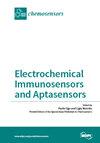Ag/rGO 作为 SERS 平台在捕获和痕量检测苯戊酸分子方面的协同增强效应
IF 3.7
3区 工程技术
Q2 CHEMISTRY, ANALYTICAL
引用次数: 0
摘要
表面增强拉曼散射(SERS)为食品中农药残留的快速检测提供了另一种方法,但氰戊菊酯与新型金属基底的亲和性较差,从而限制了其分析。为了打破这一瓶颈,我们采用一种简便的方法设计了一种具有 Ag/rGO 复合结构的 SERS 活性平台,用于检测氰戊菊酯。在强烈的超声波振荡下,直径为 60 纳米的 Ag 纳米颗粒可以均匀地生长在 rGO 层的顶部和底部,而混合材料中的 rGO 在 Ag 纳米颗粒的间隙之间充当了理想的热点固定器,不仅可以从电磁和化学两方面增强相互作用区域,还能将氰戊菊酯农药分子捕获并富集到 "热点 "区域,从而提高检测灵敏度。Ag/rGO 复合基底具有优异的 SERS 性能,4-氨基苯硫酚的可检测浓度(10-10 M)超低,重现性良好,与纯 Ag 纳米粒子相比具有更好的增强效果。将 Ag/rGO 复合材料用作检测氰戊菊酯的 SERS 底物时,在实验和理论计算中均表现出优异的性能,氰戊菊酯的检测限(LOD)低至 1.69 × 10-5 mg/kg,检测模型的 R2 为 99.2%,显示了其作为农药检测 SERS 底物的巨大潜力。本文章由计算机程序翻译,如有差异,请以英文原文为准。
Synergistic Enhancement Effect of Ag/rGO as SERS Platform for Capture and Trace Detection of Fenvalerate Molecules
Surface-enhanced Raman scattering (SERS) provides an alternative rapid detection method for pesticide residues in food, but fenvalerate possesses poor affinity to the novel metal substrate, thus restricting its analysis. To break this bottleneck, a SERS-active platform with an Ag/rGO composite structure was engineered using a facile method for fenvalerate detection. Ag nanoparticles with a 60 nm diameter can grow evenly on the top and bottom of rGO layers under intense ultrasonic oscillation, and rGO in hybrid material acts as an ideal hotspot holder between the gaps of Ag nanoparticles, not only allowing the interaction area to be enhanced both electromagnetically and chemically but also enabling the capture and enrichment of fenvalerate pesticide molecules into the “hotspot” area to improve detection sensitivity. Ag/rGO composite substrate possesses superior SERS performance with an ultralow detectable concentration of 4-aminothiophenol (10−10 M) and good reproducibility, endowing the material with a better enhancement effect than pure Ag nanoparticles. When used as the SERS substrate for fenvalerate detection, Ag/rGO composite material showed excellent performance in both experiments and theoretical calculation, with the limit of detection (LOD) of fenvalerate being as low as 1.69 × 10−5 mg/kg and a detection model with an R2 of 99.2%, demonstrating its exciting potential as a SERS substrate for pesticides detection.
求助全文
通过发布文献求助,成功后即可免费获取论文全文。
去求助
来源期刊

Chemosensors
Chemistry-Analytical Chemistry
CiteScore
5.00
自引率
9.50%
发文量
450
审稿时长
11 weeks
期刊介绍:
Chemosensors (ISSN 2227-9040; CODEN: CHEMO9) is an international, scientific, open access journal on the science and technology of chemical sensors published quarterly online by MDPI.
 求助内容:
求助内容: 应助结果提醒方式:
应助结果提醒方式:


